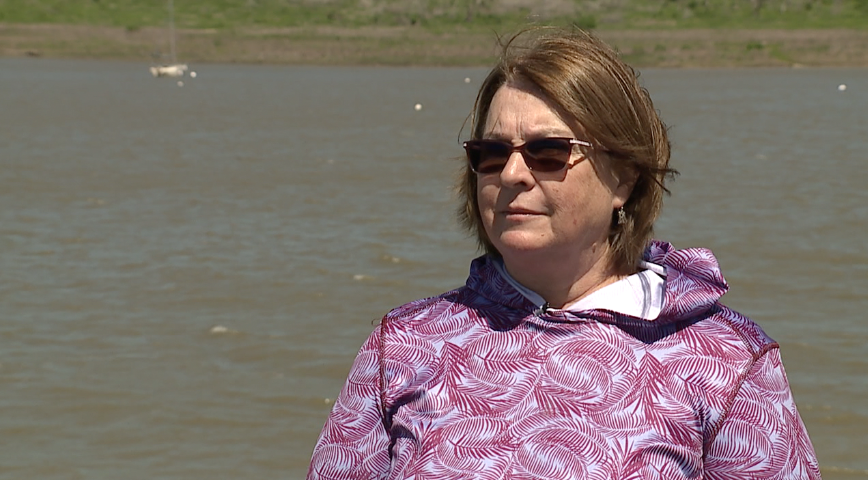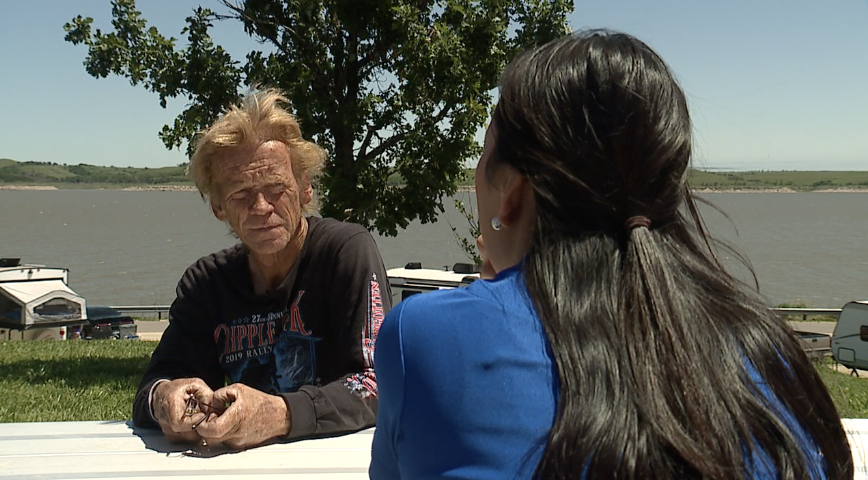MANHATTAN, Kan. — Tuttle Creek Lake is the largest reservoir in the Kansas River Basin.
But due to sediment accumulation, water supply has dropped significantly in the last 60 years.
Over 40 percent of Kansas, including Manhattan, Topeka, Lawrence, and Kansas City get their drinking water from the lake.
There are five reservoirs for drinking water in all of the Kansas River Basin including Tuttle Creek.
The lake primarily acts in six areas: flood control, support facility for the Missouri River navigation system, recreation, water quality/supply and fish and wildlife enhancement.
“Tuttle Creek, when it was first built, was close to 16,000 acres; we’ve lost almost 6,000 acres of surface area due to sedimentation,” said Brian McNulty, operations project manager of Tuttle Creek. “The sedimentation is really impacting the multipurpose pool, which is the part that we keep filled with water for the recreation, the water quality, water supply purposes.”

Laura Totten is the manager of a new $6 million dredging program that will launch next May.
It is in partnership with the U.S. Army Corps of Engineers and the Kansas Water Office.
Pressurized water will lift sediment from the base of the lake and push it downstream into the Kansas River.
It is anticipated to move completely out of the Kansas and Missouri River system and out to the Gulf of Mexico.
Dredging will occur in Spring, Summer and Fall to gather all-around data.
“These things take time to find solutions, and while 50 years seems like a long time, it's really less than a generation and if we don’t start working on it now, we will get close to that incremental risk,” Totten said. “Our projections show that about 80 to 90 percent, in 60 years of this multipurpose pool, will be gone.”

“It means a lot to us and the family — all of us getting together,” said Jeff Hilton, who is a lifelong Tuttle Creek visitor.
For the last 50 years, Hilton and his relatives met at Tuttle Creek Lake on Memorial Day weekend.
Together they visit family graves, gather for barbecues and hit the lake for boating and fishing.
It is a tradition as old as he is and one Hilton cannot imagine going without.
“Well that’d be a shame to see it go," Hilton said. "If you don’t have the lake, you don’t have camping, you don’t have family get together, nothing like that."
Part of the risk of the accumulating sediment is the larger impact on economy.
In fiscal year 2021, visitors to Tuttle Creek generated $42.5 million within 30 miles of the lake.
Not to mention, for people like Hilton, the value of family tradition is not quantifiable.
“Hope they keep it up and keep it alive,” said Hilton. “It’s hard to find a lot of family traditions like that.”
—




